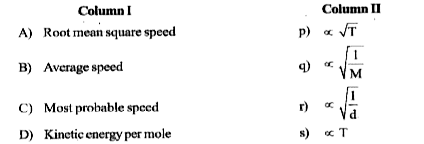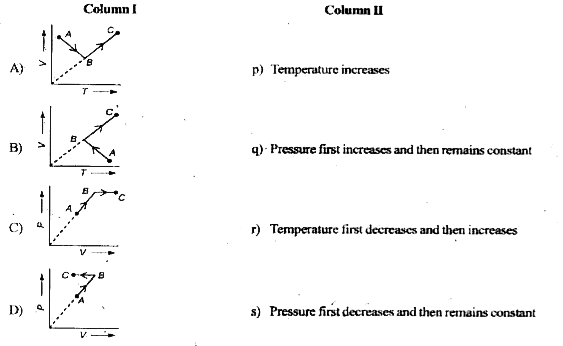LEVEL III (Numerical Type) from BRILLIANT PUBLICATION STATES OF MATTER for Class 11
| Class 11 | CHEMISTRY |
| Chapter | STATES OF MATTER |
| BRILLIANT PUBLICATION | LEVEL III (Numerical Type) |
| Medium | English |
| Academic Year | 2023-2024 |
Question 4
A collapsed balloon is filled with He to a volume of 12 L at a pressure of 1.0 atm. Oxygen gas is then added, so that the final volume of balloon is 26 L with a total pressure of 1.0 atm. The temperature, constant throughout, is equal to 20∘C. Determine mass of oxygen gas addedView SolutionQuestion 8
At room temperature the following reactions proceed nearly to completion : 2NO+O2→2NO2→N2O4 . The dimer N2O4 solidified at 262 K. A 250 mL flask and a 100 mL flask are separated by a stopcock. At 300 K, the nitric oxide in the larger flask exerts a pressure of 1.053 atm and the smaller one contains oxygen at 0.789 atm. The gases are mixed by opening the stopcock and after the end of the reaction the flasks are cooled to 220 K. Neglecting the vapour pressure of the dimer, find out the pressure of the gas remaining at 220 K. (Assume the gases to behave ideally)View SolutionQuestion 9
The composition of the equilibrium mixture (Cl ⇔2CI), which is attained at. 1200∘C, is determined by measuring the rate of effusion through a pinhole. It is observed that at 1.80 mm Hg pressure, the mixture effuses 1.16 times as fast as krypton effuses under the same conditions. Calculate the fraction of chlorin molecules dissociated into atoms: (Relative atomic mass of Kr=84)View SolutionQuestion 26
The diffusion coefficient of an ideal gas is proportional to its mean free path and mean speed. The absolute temperature of an ideal gas is increased 4 times and its pressure is increased 2 times. As a result, the diffusio coefficient of this gas increases x times. The value of x isView SolutionQuestion 40
Statement 1 : Critical temperature is the temperature at which a real gas.exhibits ideal behaviour considerable range of pressure.
Statement 2 : At critical point the densities of a substance in gaseous and liquid states are same. : Statement 1 is True, statement 2 is True, Statement 2 is Correct explanation for Statement 1.; Statement 1 is True, Statement 2 is True, Statement 2 is NOT a correct explanation for Statement 1.; Statement 1 is True, Statement 2 iş False.; Statement 1 is False, Statement 2 is True.View SolutionQuestion 46
A very convenient method of study in PV deviation of real gases from ideal behaviour is through a compressibility factor (Z), Z= PVnRT
i) Z=1, for ideal gases , ii) Z+1, for real gases
The behaviour of a real gas is usually depicted by plotting compressibility factor Z versus pressure P at a constant temperature. At high temperature and pressure, Z is usually more than one. This fact can be explained by van der Waal's equation when: the constanta is negligible but notb, the constant b is negligible but not a, both the constants a and b are negligible, both the constants a and b are not negligibleView SolutionQuestion 50
The fraction of gaseous molecules having speed in between u and u+ du as governed by Maxwell distribution of speeds is given by dNuN=4π(M2πRT)1/2 exp (−Mu2/2RT)u2 du
Graphically this distribution is shown in fig.
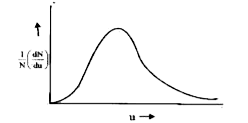
Based on this distribution, answer the following three question
With increase in temperature, the quantity (dN/N)/du in the low speed range.View SolutionQuestion 51
The fraction of gaseous molecules having speed in between u and u+ du as governed by Maxwell distribution of speeds is given by dNuN=4π(M2πRT)1/2 exp (−Mu2/2RT)u2 du
Graphically this distribution is shown in fig.
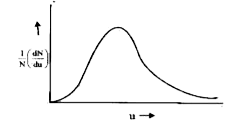
Based on this distribution, answer the following three question
With increase in temperature, the quantity (dN/N)/du in the high speed range View SolutionQuestion 52
The fraction of gaseous molecules having speed in between u and u+ du as governed by Maxwell distribution of speeds is given by dNuN=4π(M2πRT)1/2 exp (−Mu2/2RT)u2 du
Graphically this distribution is shown in fig.
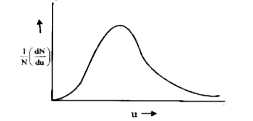
Based on this distribution, answer the following three question
The maximum value of (dN/N)/du corresponds to most probable speed. With increase in temperature, this maximum fractionView Solution
All Exercises from BRILLIANT PUBLICATION Class 11 CHEMISTRY STATES OF MATTER
- (LEVEL-I (HOMEWORK)
- QUESTIONS
- (LEVEL-II (HOMEWORK)
- LEVEL - I
- LEVEL I
- LEVEL - II
- LEVEL - II (ASSERTION-REASON TYPE)
- LEVEL II
- LEVEL III (NUMERICAL TYPE)
- LEVEL III (LINKED COMPREHENSION TYPE )
- LEVEL III (MATCHING COLUMN TYPE .)
- LEVEL III (MULTIPLE CORRECT ANSWER TYPE )
- LEVEL III (SINGLE CORRECT ANSWER TYPE)
- LEVEL III (STATEMENT TYPE )

